irrigation networks


Which is our value proposition?
Offer the managers and their irrigators in the Irrigation Communities and Water User Associations (WUA), IoT and Cloud technology that provide effective and efficient solutions to help them:
- implement irrigation remote control systems
- optimize the management of their infrastructures and their water-energy resources
- decrease operating and maintenance costs, increasing the competitiveness of the Community and its irrigators
- serve water in time and quantity to farmers
-
For this we provide modular applications, which use controllers and remote controlled irrigation stations and instrumentation with IoT technology (sigma, delta and alpha, detecta), complementedby our hidranet network management software and by the nebula and monitor apps, which allow:
- to measure the consumption of water and ensure its billing (remotely)
- manage irrigation shifts
- interact with the irrigators
- hydraulic control of the transport network
- monitor water reserves
- control the systems of catchment and impulsion
- optimize energy efficiency and manage energy
“our goal is to help the managers and their irrigators in the governance of water to manage their shortage by putting in their hands technology 4.0”
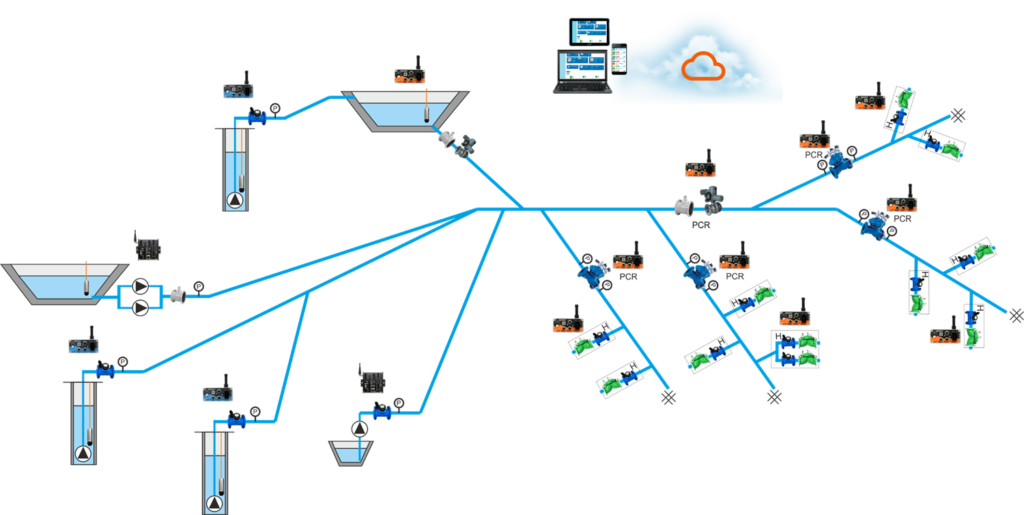
Hidrantes
Each community of irrigators has its particularities at the network level, cultivation, associative model, and, therefore, way to irrigate and manage. We have analyzed all the casuistry and designed technological solutions specific to the different management needs of the Community and WUA. So, we have applications based on irrigation RTU sigma5 and hidranet, a specific network management software that resolve from consumption telemetry to remote control and management of irrigation shifts
delivery points
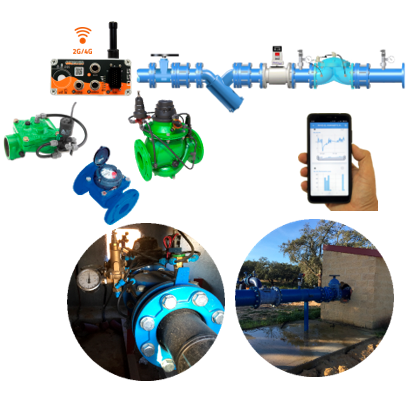
telemetry (flow, volume and pressures) and remote control (valve) at delivery points with irrigation on demand
single hydrants
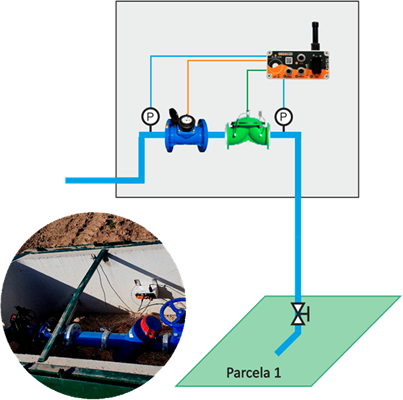
telemetry (flow, volume and pressures) and remote control (valve) in single hydrants
centralization of meters
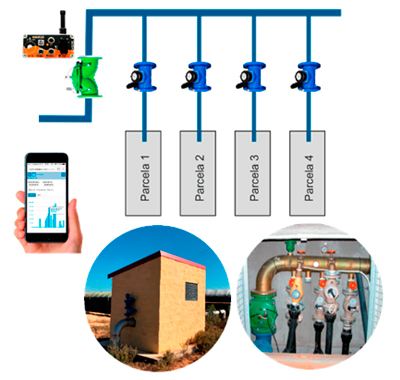
hydrant telemetry with individualized counters for irrigation on demand
grouped hydrants
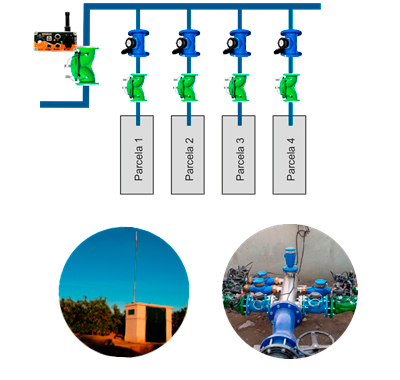
remote control adapted to irrigation on demand with counters and individualized valves with management of shifts by zones
shared sockets
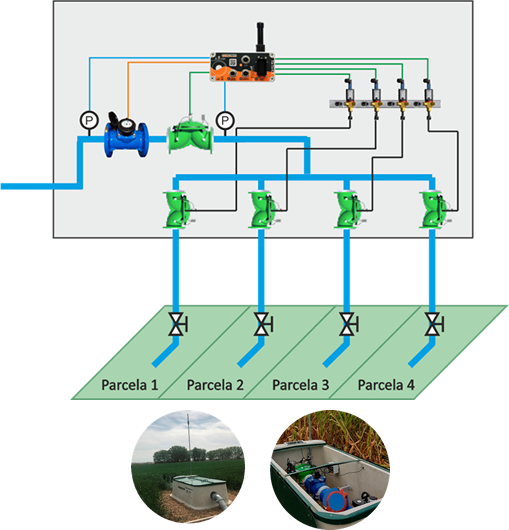
telecontrol adapted to irrigation by shifts of shared sockets with “request–concesión” management
wireless shared sockets
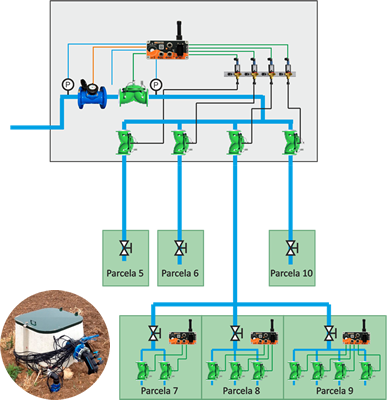
remote control adapted to the irrigation of shared wireless sockets with “request-concession” management, without microtubes or cables
fertigation heads with distributed sector valves
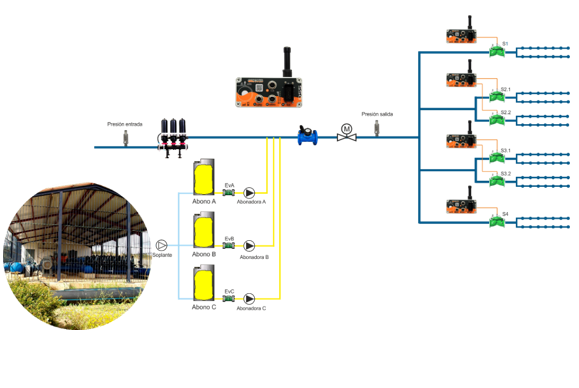
remote control of fertirrigation heads with distributed sector valves, connected without cables or microtubes, with irrigation scheduling coordinated by shifts organized by groups or areas
s
Red de riego
Irrigation networks are a branch of distribution pipes that are designed to maintain a constant pressure at all points, so that the water supply at the delivery points (hydrants) do not alter the pressure of the network. The networks have singular points where pressure regulating valves, over-speed valves, cut-off valves and instrumentation for the measurement of flow and pressure are usually installed.
flow telemetry
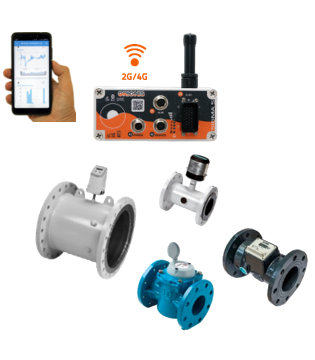 measures and registers flows and volumes at delivery points and singular points
measures and registers flows and volumes at delivery points and singular points
network monitoring and sectorization
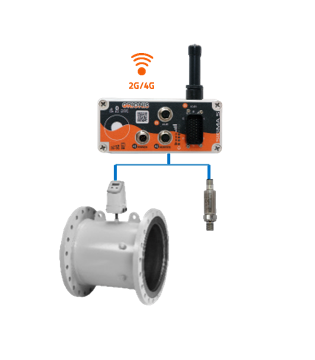
guarantees the uniformity of pressures in the network, prevents leaks, saving water and energy
electronic regulation of flow and remote control
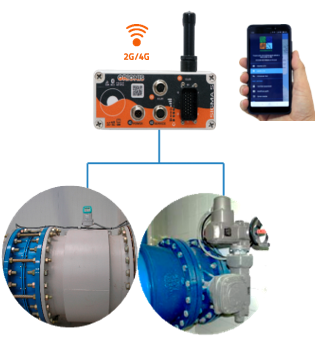 facilitates the operation of the network and reduces operating and maintenance costs
facilitates the operation of the network and reduces operating and maintenance costs
flow limitation
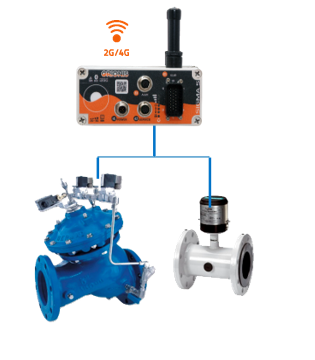 electronic pressure limitation: prevents and reduces breakage
electronic pressure limitation: prevents and reduces breakage
Pozos y EEBB de riego
One of the most unique elements of an irrigation network are the collection wells and pumping stations, which either raise water to a tank or pond or supply water directly to the network, in this case, as a hydropressor group, so the monitoring, remote control and remote control applications are fundamental to improve its efficiency and optimize its energy costs and guarantee the water supply.
monitoring and simple remote control
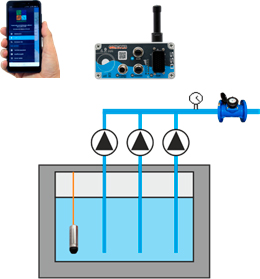
monitoring and remote control of pumping stations: control of the status of the pumps and their hydraulic parameters
monitoring and simple remote control
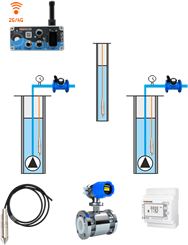
well monitoring: control of the electromechanical state of the pump, water table and flow
telemetry and well control
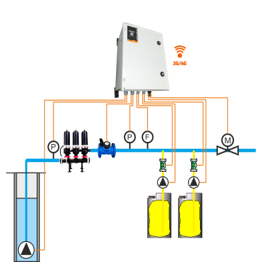 telemetry and well control: automation, remote control, filtering, automatic fertirrigation, control of its hydraulic and electrical parameters
telemetry and well control: automation, remote control, filtering, automatic fertirrigation, control of its hydraulic and electrical parameters
energy control
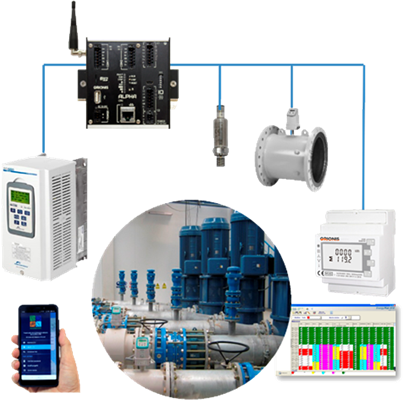
consumption and electrical and hydraulic parameters pumping stations performance, breakage control, automation coordinated with the electric tariff
vibration control
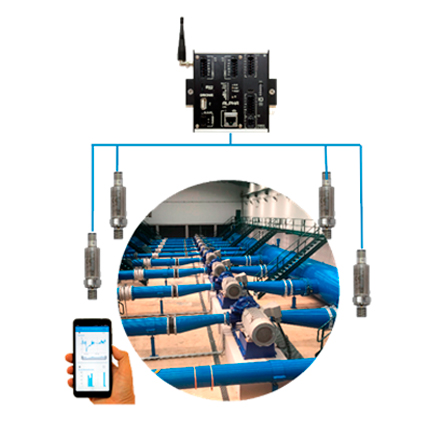
prevents breakage and mechanical breakdown, reduces maintenance costs and minimizes downtime
Depósitos y tanques
automated filling
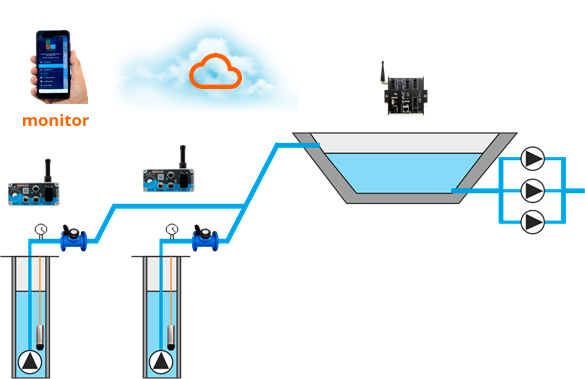
monitoring and remote control of wells and deposits: automatic remote control of the wells according to the remote levels of the deposit and the rates and capacity of the wells, monitoring of the hydraulic subsystem
Tank and automated filling tanks
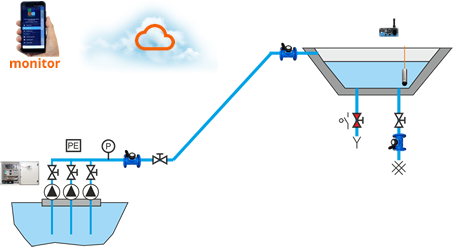
monitoring and remote control of pumping stations, tanks and reservoirs, depending on remote levels and electricity rates
Balsas de riego
In irrigation networks where sufficient geometric height is available, they are supplied directly from ponds and storage tanks. To control the water reserves, a system is needed that measures, monitors and registers the level of the reservoirs and their reserve capacity, also allows remote actions on their inlet and / or outlet valves and counts the flow and volume of output .
ponds, rafts
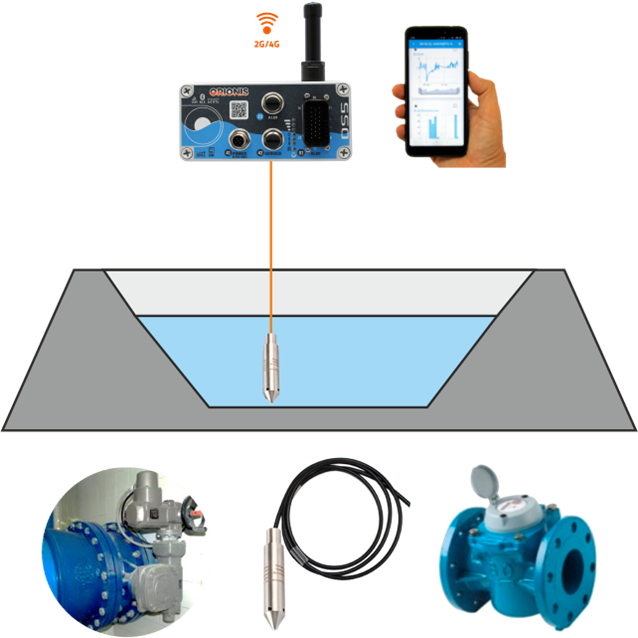
monitoring and telemetry of level, volume and flow, remote control of valves
deposits and tanks
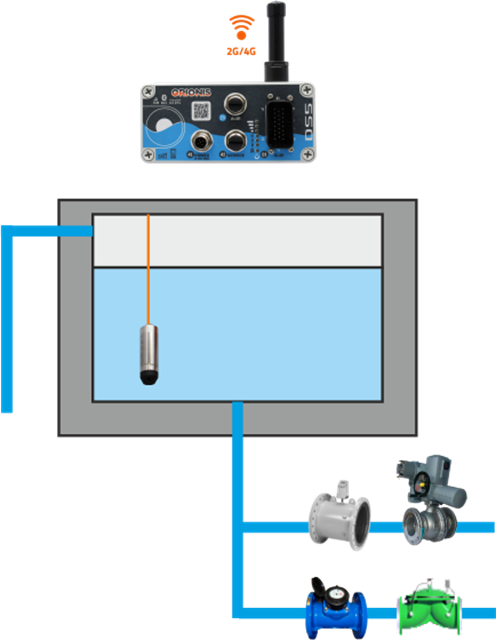
monitoring, telemetry level, volume and flow
regulation of gates
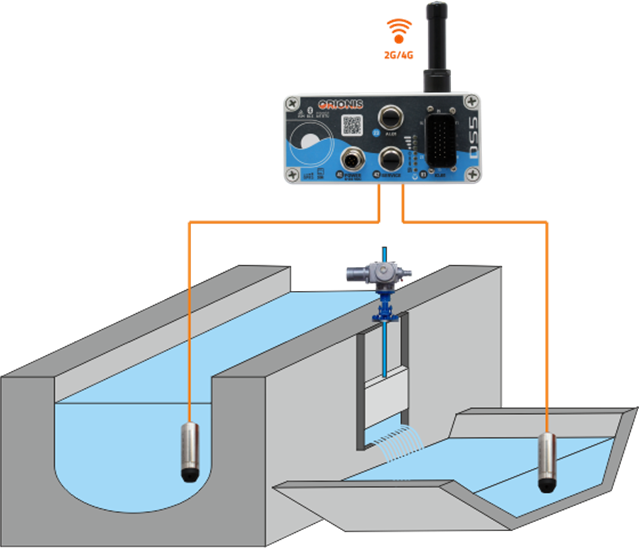
remote control and flow regulation of gates for entry into ponds
water quality
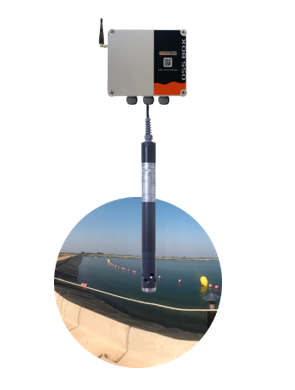 |
 |
water quality monitoring with multi-parametric probes
canales de riego
Waterways are used to transport water from the dams or rivers to the distribution networks of the Communities, which is what is colloquially called a “high network”. It is necessary to monitor this transport network, its flows and tele-control the distribution of water to different consumers through motorized gates.
irrigation with waterways
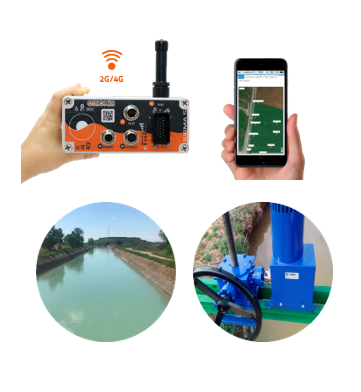
remote control and regulation of gates, telemetry of levels and flow rates
flow telemetry
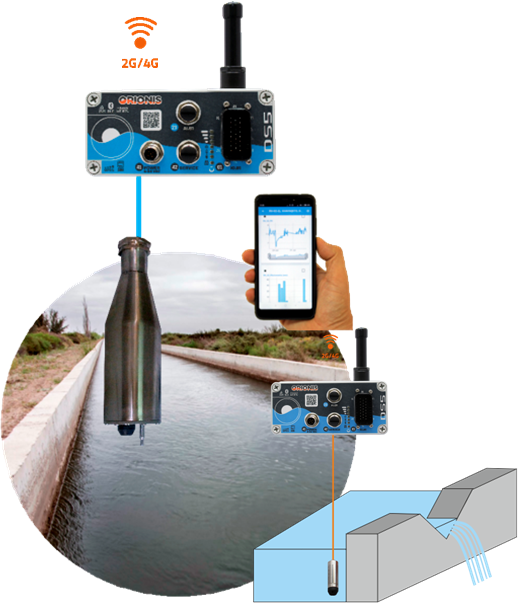
caudalimeter open canal area velocity. Measure flow (m3/h) volume (m3), level (cm) and speed (cm/s)
